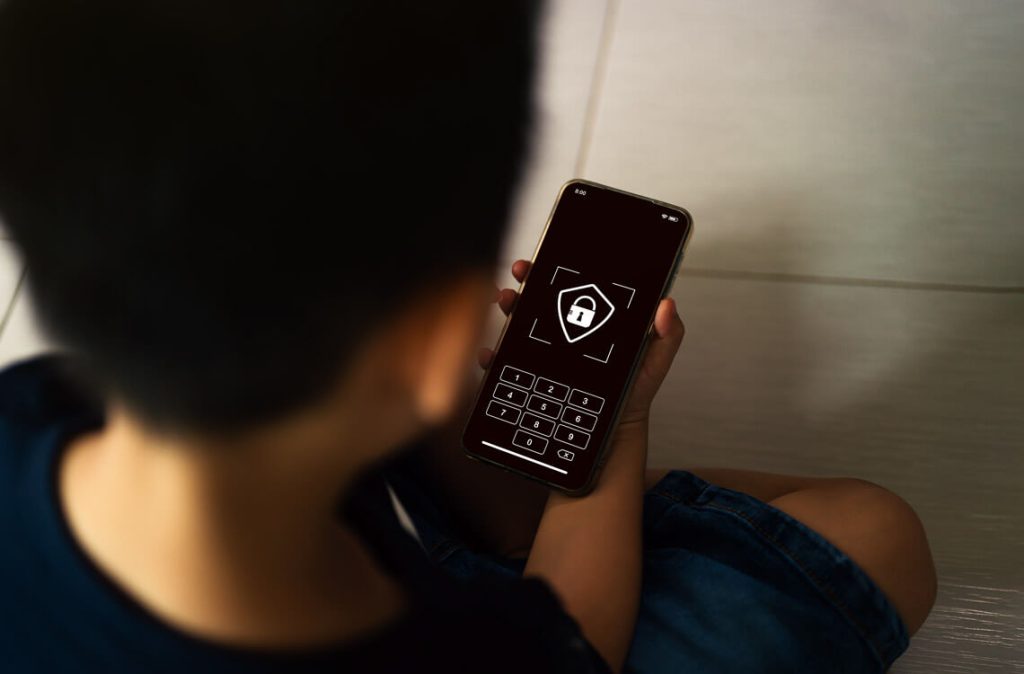Babies today often appear on social media before they can even crawl.
Proud parents post photos, videos, and funny stories without much thought. But every post leaves a digital footprint.
That means a child can have an online presence years before they understand what “online” even means.
This is why digital privacy education cannot wait until high school computer class. It has to begin much earlier, some experts argue, as early as toddlerhood.
That might sound extreme, but if kids are swiping screens before they’re potty trained, shouldn’t we also be teaching them how to stay safe in the process?
The Future Of Digital Childhood
By the time today’s toddlers reach adolescence, the online world will look completely different.
Technology will evolve, but the principle of privacy will remain. Giving kids a strong foundation now means they’ll enter that future with tools to protect themselves, even in spaces we can’t imagine yet.
There’s already a growing conversation around children’s digital rights.
Some countries are debating laws that limit parental posting of kids’ photos or regulate how companies collect children’s data.
While those discussions are important, change at the policy level moves slowly.
Parents, on the other hand, can start the education process today—at home, with their toddlers.
So, how do we start? Let’s dive in, shall we?
Toddlers Understand More Than We May Think
First, stop thinking like an adult.
You don’t need to sit a two-year-old down for a lecture on data harvesting or email phishing. Instead, frame privacy in simple, relatable ways.
Toddlers already understand concepts like “mine” and “yours”. That’s the foundation for digital privacy. Explaining that photos, names, and voices belong to them is the first step.
For example, when snapping a picture, you can ask, “Do you want me to share this or keep it just for us?”
Even if they don’t grasp the full meaning, the question plants an early seed. It shows them that they have a say in how their image is used.
Parents As First Teachers
Kids copy what they see. If a parent constantly overshares, children may grow up thinking it’s normal to give strangers access to their lives.
On the other hand, modelling restraint—pausing before posting, asking permission, and blurring backgrounds—shows that privacy matters.
Some parents now practise what’s called “sharenting with consent”.
They limit the details they post about their children, or they make private albums instead of public posts.
This approach does more than protect the child’s image.
It demonstrates respect for boundaries, which is a lesson toddlers can absorb even if they don’t have the vocabulary yet.
Toddlers learn best through play. That’s why digital privacy lessons should be woven into games, not scolding lectures.
You might create a “privacy box” where children store special toys or drawings that only family can see. This teaches them the idea that some things are private and protected.
Another playful approach could be role-playing.
Pretend to be someone asking for their name or favourite toy, and guide them to respond with, “I only share with my family.” Rehearsing these scenarios in a light way helps toddlers practise setting limits.
Virtual Boundaries
Digital privacy is really just an extension of personal boundaries.
If a toddler learns they can say no to hugs they don’t want, they’ll be better prepared later to say no to oversharing online.
If they learn that some information, like home addresses or family routines, should stay private, they can carry that awareness into their digital lives as they grow.
In other words, building strong offline boundaries makes online safety much easier.
Toddlers don’t need to know the word “cybersecurity”. They just need to know that some parts of themselves are theirs alone.
Online Safety for All
It’s easy to dismiss digital privacy as a problem for older kids. But toddlers are the first generation born into constant connectivity.
Every click, upload, and share involving them sets the stage for how they’ll view their own digital identity.
Starting small, with simple phrases and everyday choices, can help.
Ask permission before posting. Show them that privacy matters.
Make it playful, but consistent.
You don’t need to be perfect, but you do need to be intentional.
Because when it comes to privacy, the earlier children learn that their voice counts, the stronger and safer they’ll be in the digital world that’s waiting for them.
Disclaimer: The information provided in this article is for informational purposes only and should not be considered as medical advice from Motherhood. For any health-related concerns, it is advisable to consult a qualified healthcare professional or medical practitioner.
For more insightful stories and fun recipes, stay tuned to Motherhood Story!
